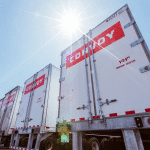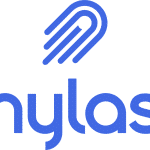Local taxes play a significant role in shaping the communities where we live. While paying taxes might not be anyone’s favorite activity, these contributions directly impact the quality of life in your neighborhood, including the street you call home.
From maintaining road safety to enhancing public spaces, understanding how your local taxes are utilized can foster a deeper appreciation for the services you receive and the community improvements they fund.
In this comprehensive guide, we’ll explore 9 key ways local taxes improve your street and how these contributions are essential for creating a safe, functional, and appealing environment.

Keys to understanding how your local taxes improve the street where you live
1. Road Maintenance and Repairs
One of the most visible ways local taxes are used is in maintaining and repairing roads. Cracked pavement, potholes, and faded markings not only make driving less pleasant but also pose safety risks for drivers, cyclists, and pedestrians.
Local governments allocate a significant portion of tax revenues to ensure streets remain in good condition. Regular resurfacing, sealing cracks, and repainting lines are just a few of the activities funded by your taxes.
Well-maintained roads reduce vehicle wear and tear, minimize accident risks, and contribute to a smoother commute. By understanding this allocation, you can see how your tax dollars directly improve the street outside your door.
2. Street Lighting
Proper lighting is essential for safety and accessibility, particularly at night. Taxes fund the installation and maintenance of streetlights, ensuring visibility for drivers, pedestrians, and cyclists.
Streetlights help deter crime, reduce the likelihood of accidents, and create a sense of security for residents. Additionally, modern energy-efficient lighting systems, often funded by taxes, are being introduced in many communities to reduce electricity costs and environmental impact.
Next time you walk home under a well-lit street, remember that local taxes make this safety feature possible.
3. Sidewalk Construction and Maintenance
Sidewalks are a fundamental part of any neighborhood, providing safe paths for walking, jogging, and other recreational activities. Taxes fund the construction and upkeep of sidewalks, ensuring they are free from cracks, tree root damage, or other hazards that could cause accidents.
In areas where sidewalks are outdated or non-existent, tax revenues are often used to expand pedestrian infrastructure, promoting a walkable community and reducing reliance on cars.
Investments in sidewalks enhance not only the safety but also the aesthetic appeal of your street, encouraging outdoor activities and neighborly interactions.
4. Waste Collection and Street Cleaning
Keeping your street clean and free from debris is another crucial function funded by local taxes. Waste collection services ensure garbage, recyclables, and compostables are regularly removed, preventing unsightly piles of trash and mitigating health risks.
Street cleaning crews, also funded by tax revenues, remove litter, leaves, and other debris that accumulate along roads and sidewalks. These efforts maintain the cleanliness and overall appeal of your street, creating a more pleasant environment for everyone.
Regular cleaning also prevents clogged storm drains, which could lead to flooding during heavy rains—a proactive measure that benefits the entire community.
5. Traffic Management and Safety Features
Traffic signs, signals, and speed bumps are essential components of a safe street, and their installation and maintenance are funded by local taxes. These features help regulate traffic flow, reduce speeding, and minimize accidents, making your neighborhood safer for residents and visitors alike.
Additionally, taxes fund road redesign projects that incorporate roundabouts, bike lanes, and pedestrian crossings. These improvements not only enhance safety but also promote alternative modes of transportation, contributing to a greener and more sustainable community.
By understanding how your taxes support these safety measures, you can appreciate the investments made to protect everyone who uses your street.
6. Stormwater Management and Drainage
Proper drainage systems are vital to prevent flooding and water damage on your street. Local taxes fund the construction and maintenance of stormwater systems, including gutters, drains, and underground pipelines.
These systems channel rainwater away from roads and properties, minimizing the risk of flooding during heavy rainfall. Additionally, modern stormwater management projects funded by taxes often include environmentally friendly practices, such as rain gardens and permeable pavements, to reduce runoff and protect local waterways.
Next time a storm hits, consider how these systems, supported by your tax contributions, keep your street safe and functional.
7. Tree Planting and Landscaping
Well-maintained streets often feature greenery, such as trees, shrubs, and flowers, which enhance the beauty and livability of a neighborhood. Taxes fund tree planting and landscaping projects, creating green spaces that provide shade, reduce noise, and improve air quality.
Urban forestry programs, supported by local taxes, also ensure the regular maintenance of existing trees, including trimming branches and removing dead or hazardous trees.
A well-landscaped street doesn’t just look good; it contributes to environmental sustainability and fosters a sense of pride among residents.
8. Public Safety Measures
Local taxes fund law enforcement, fire services, and emergency response teams that ensure your street remains a safe place to live. Police patrols help deter crime, while fire departments and paramedics respond quickly to emergencies, protecting lives and property.
In some areas, taxes also support neighborhood watch programs or community policing initiatives, strengthening the relationship between residents and law enforcement.
These public safety measures create a secure environment that allows you to enjoy your street and community with peace of mind.
9. Community Events and Beautification Projects
Beyond basic maintenance, local taxes often support initiatives aimed at fostering community pride and connection. Beautification projects, such as murals, public art installations, or seasonal decorations, add character and charm to streets.
Taxes also fund local events, like street fairs or clean-up days, which bring neighbors together and create a sense of belonging. These activities not only improve the aesthetic appeal of your street but also contribute to a vibrant and engaged community.
By participating in these initiatives, you can see firsthand how your tax dollars contribute to the social and cultural enrichment of your neighborhood.
Why Understanding Tax Allocation Matters
Understanding how your local taxes are used fosters transparency and accountability. It allows you to advocate for improvements in your community and ensures that tax revenues are allocated to projects that truly benefit residents.
When you see the direct impact of your contributions, from cleaner streets to safer roads, it’s easier to appreciate the value of paying local taxes.
Conclusion
Local taxes are the backbone of a well-maintained, safe, and vibrant street. From essential services like road repairs and waste collection to community-building initiatives, these funds play a critical role in enhancing your neighborhood’s quality of life.
By understanding these 9 keys to how your taxes improve the street where you live, you can become a more informed and engaged member of your community. Embrace the opportunity to contribute, and take pride in knowing that your tax dollars are making a tangible difference in your everyday environment.






